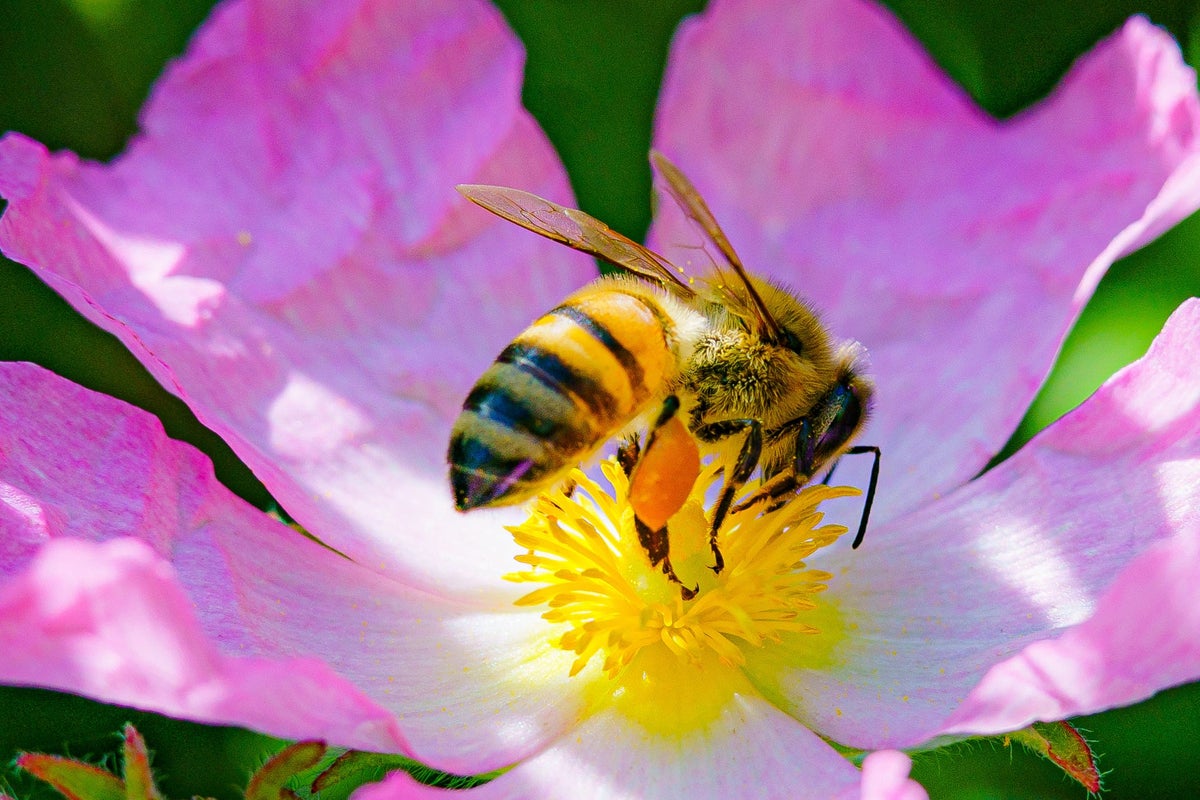Honey bees could help track microorganisms in cities, scientists say

Bees play an important role in the ecosystem as pollinators but scientists believe they may be helpful in other ways – such as providing insight into the health of people living in cities.
Scientists have been investigating urban honey bees to see if they can provide clues on the types of microorganisms that exist in cities – collectively known as the microbiome.
Elizabeth Henaff, an assistant professor at the NYU Tandon School of Engineering, in the US, said: “For those of us who live in cities – which is more than half of the global population at this point – it is important to be able to characterise the microbiomes of the cities that we live in, and work in, and sleep in.”
Cities are dynamic ecosystems with humans, the urban environment, and a diversity of plant and animal inhabitants.
There are also unseen urban dwellers – microorganisms – that play a key role in maintaining this ecosystem.
While past research has focused on the microbiome of indoor environments, not much is known about the ecosystem services provided by microbiomes of the outdoors, particularly in urban habitats.
Sampling an entire city to get a picture of its microbes can be labour-intensive.
So Ms Henaff and her colleagues investigated whether honey bees (Apis Mellifera) could help gather samples of microorganisms across cities, as these insects travel a mile from their hives for daily foraging.
For the pilot study in New York, the researchers took samples from three hives, which included debris at the bottom.
Samples were later collected from hive debris in Sydney and Melbourne in Australia, Venice in Italy, and Tokyo in Japan.
Findings suggest that each location has a unique genetic signature, the researchers said.
For example, the team said the genetic data in Venice was dominated by fungi related to wood rot and date palm DNA while in Tokyo samples included plant DNA from lotus and wild soybean, as well as the soy sauce fermenting yeast Zygosaccharomyces rouxii.
Genetic material for Rickettsia felis – a bacterium that is spread to humans via cat scratches – was found in the debris of some of the hives.
The researchers said their work shows potential for using bees as a surveillance method to track microbes in cities.
However, they added it is too early to suggest this method could be used to monitor pathogens – microbes that are harmful and can cause human diseases.
Ms Henaff said: “I’d like to stress that the goal of this study isn’t necessarily one of pathogen surveillance, but more so one of understanding the whole breadth of diversity of microbiomes that we’re interacting with in urban environments with the acknowledgment that most microbes that are out there are not pathogenic.
“A lot of them are beneficial to human health, and then even more of them are just actually neutral from our perspective, but maybe very important for other species that inhabit our urban environments.”
The research is published in the journal Environmental Microbiome.
For all the latest Science News Click Here
For the latest news and updates, follow us on Google News.

